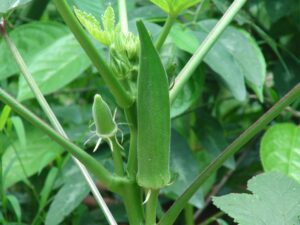Imidacloprid 17.8% S.L.: A Comprehensive Guide for Sucking Pest Management
Introduction
Imidacloprid 17.8% S.L. is a potent insecticide widely used to manage sucking pests in various crops. Sucking pests, such as aphids, jassids, thrips, whiteflies, and others, can cause significant damage to crops, leading to reduced yields and economic losses for farmers. Imidacloprid, with its competitive modulator action on nicotinic acetylcholine receptors (NACHRs), provides an effective and affordable solution to combat these destructive pests.
Solution for Sucking Pest Management in Multiple Crops
Imidacloprid 17.8% S.L. is an invaluable tool for managing sucking pests in a diverse range of crops. Its broad-spectrum effectiveness makes it a popular choice among farmers dealing with various agricultural challenges.
Quick Facts
Affordable Solution for Sucking Pest Management: Imidacloprid 17.8% S.L. offers an economical yet highly effective solution for farmers dealing with the menace of sucking pests in their crops.
To Be Avoided During Honey Bee Activity: Due to its potency and potential impact on pollinators, especially honey bees, it’s advisable to avoid using Imidacloprid 17.8% S.L. during their activity periods to ensure the preservation of these vital pollinators.
Crops and Targets
Imidacloprid 17.8% S.L. is applied in various crops to target specific sucking pests. Understanding its application and target pests is crucial for optimizing its efficacy.
Crops
Chili

Aphids
Jassids
Thrips
Citrus

Leafminer
Psylla
Cotton

Aphids
Jassids
Thrips
Whitefly
Grape

- Flea beetle
Groundnut

Aphids
Jassids
Mango

- Hopper
Okra

Aphids
Jassids
Thrips
Paddy

BPH (Brown Plant Hopper)
GLH (Green Leafhopper)
WBPH (White-Backed Plant Hopper)
Sugarcane

- Termite
Sunflower

Jassids
Thrips
Whitefly
Tomato

- Whitefly
Targets
Aphids
Jassids
Thrips
Whitefly
Leafminer
Psylla
Flea beetle
Hopper
BPH (Brown Plant Hopper)
GLH (Green Leafhopper)
WBPH (White-Backed Plant Hopper)
Termite
Mode of Action
Imidacloprid 17.8% S.L. operates by acting as a NACHR Competitive Modulator. It disrupts the nervous system of insects by binding to nicotinic acetylcholine receptors competitively, causing paralysis and eventual death of the target pests.
Disclaimer
Always adhere to the instructions provided in the product leaflet and exercise caution while handling and using Imidacloprid 17.8% S.L. for pest management.
Benefits
Imidacloprid 17.8% S.L. offers a range of benefits to farmers dealing with sucking pests, including:
- Affordability: It provides a cost-effective solution for managing a variety of sucking pests in different crops.
Conclusion
Imidacloprid 17.8% S.L. stands as a critical tool in modern agriculture, aiding farmers in protecting their crops from the damage caused by sucking pests. Understanding its appropriate application, mode of action, and adhering to recommended guidelines ensures optimal pest management and sustainable crop production. Always prioritize the preservation of essential pollinators like honey bees by avoiding its use during their active periods.












